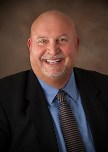Day 1 :
Keynote Forum
James L Ratcliff
Rowpar Pharmaceuticals, Inc., USA
Keynote: Biofilm, Bugs and the Microbiome: Implications for future research and practice

Biography:
Abstract:
Keynote Forum
Alex A Giannini
Georgetown University School of Dentistry, USA
Keynote: Dental industry perspectives and the emergence of dental support organizations

Biography:
Abstract:
- Dental Sleep Medicine | Oral and Maxillofacial Surgery | Orthodontics | Cosmetic Dentistry | Oral Implantology | Preventive Dentistry
Location: San Francisco, USA

Chair
James L Ratcliff
Rowpar Pharmaceuticals, Inc., USA

Co-Chair
Alex A Giannini
Georgetown Univesity School of Dentistry, USA
Session Introduction
Umesh Pratap Verma
King Georges Medical University, India
Title: Outcomes of minimal invasive implant therapy

Biography:
Abstract:
Pradeep Acharya
B.P.Koirala Institute of Health Sciences, Nepal
Title: Incidence of dry socket after extraction and its causative factors experience at BPKIHS

Biography:
Abstract:
Sakshi Malik
Daswani Dental College and Hospital, Kota, India
Title: Assessment of dental caries and eruption of primary teeth in children with protein energy malnutrition

Biography:
Abstract:
Soumya Vishwanth
Consultant Periodontist, India
Title: Why pick on teeth – Toothpicks then and now

Biography:
Abstract:
Hafsa Affendi
Rutgers School of Dental Medicine, USA
Title: Current concepts in diagnosis and management of Non-odontogenic Orofacial pain

Biography:
Abstract:

Biography:
Abstract:

Biography:
Abstract:
- Dental Surgery | Endodontics | Prosthodontics | Preventive Dentistry | Dental Education and Training
Location: San Francisco, USA

Chair
Alex A Giannini
Georgetown Univesity School of Dentistry

Co-Chair
Sonya Dunbar
RDH, MHA Geriatric ToothFairy
Session Introduction
Greta Kersyte
Lithuanian University of Health Sciences, Lithuania
Title: Human dentin as an autologous bone grafting material
Biography:
Abstract:
Ghaidaa Ureiga
Ministry of Health, Saudi Arabia
Title: Caries risk factors for children seen in jeddah speciality dental center
Biography:
Abstract:
Yasemin Erdogan
Istanbul University School of Dental Medicine, Turkey

